Hand soap is a workhorse in the home, cleansing hands all day long. It’s one of the most frequently used products in your home.
That’s why I love this simple liquid hand soap recipe. It’s super effective, cheap, and uses only a few ingredients.
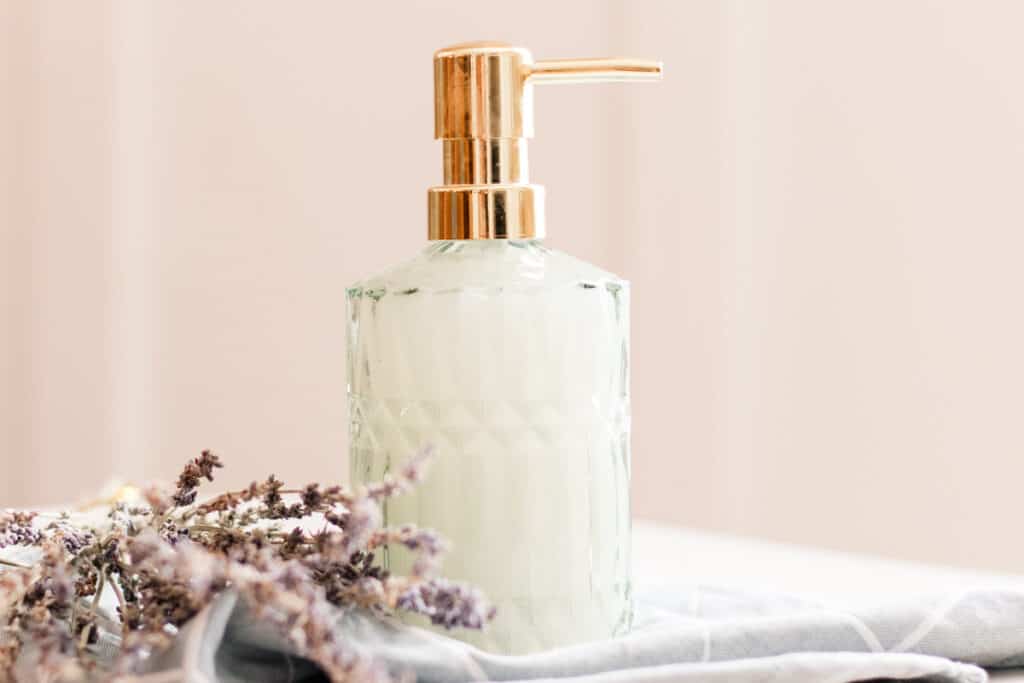
Making liquid soap is such an easy and simple DIY recipe. For something that gets used so much every day, it’s wonderful to be able to make it yourself, especially when you can save money by purchasing the ingredients in bulk.
This soap recipe is easy on the budget, reduces waste by eliminating single-use plastic containers, and gets the job done.
How to make liquid hand soap
You can customize this lavender liquid soap recipe if you’d like to change out the fragrance. I use lavender essential oil in this recipe, but feel free to swap it out for your favorite scent. See the ‘essential oils for soap’ section below for more ideas.
Ingredients
- 12 oz of distilled water
- 1.0 oz (2 tablespoons) of vegetable glycerin.
- 2.0 oz (4 tablespoons) of castile soap.
- 15 drops of lavender essential oil
- 0.03 oz of Geogard 221 preservative (0.2% of total weight) (if needed)
Instructions
Step 1. Add vegetable glycerin and castile soap to a small bowl.
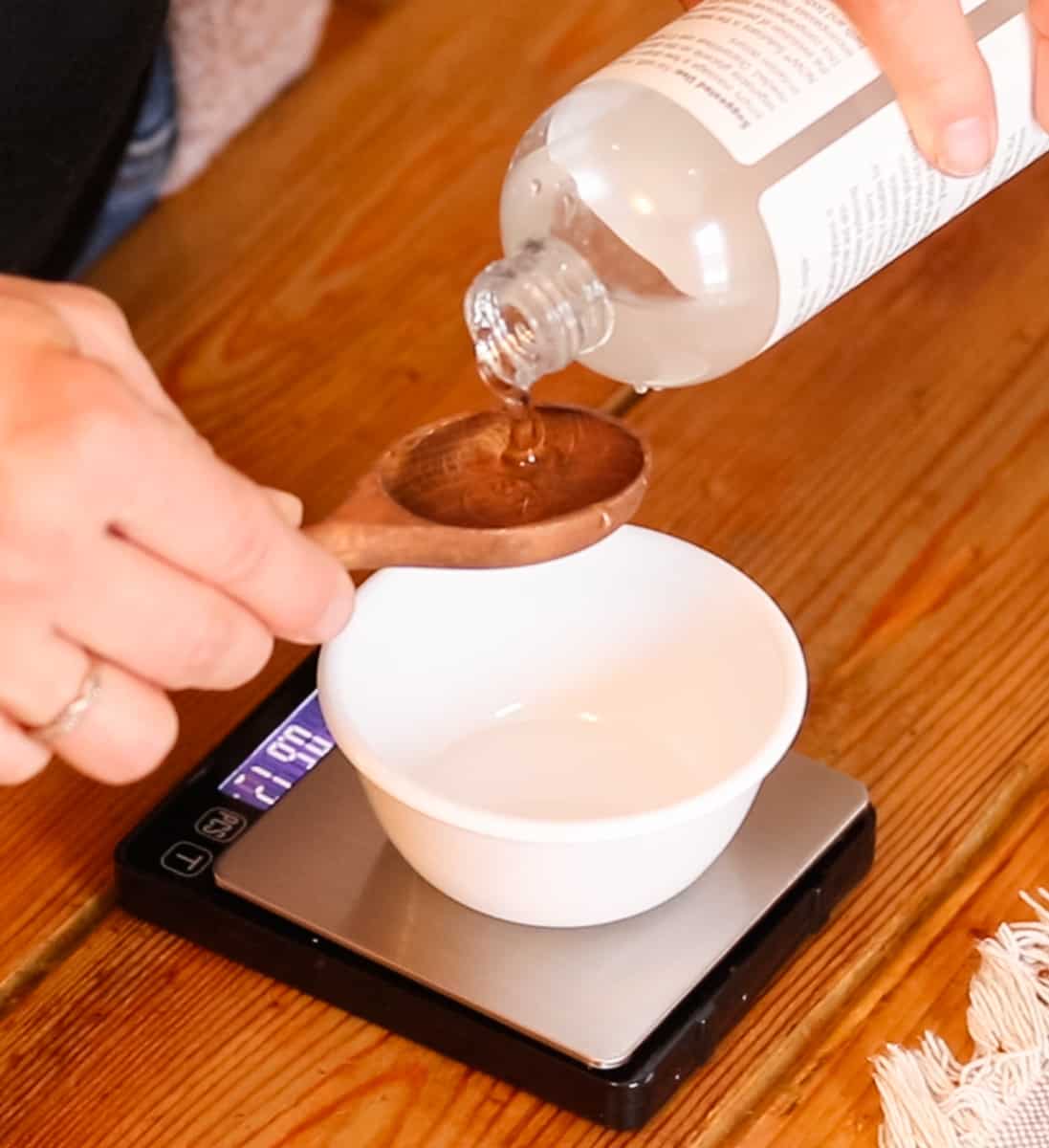
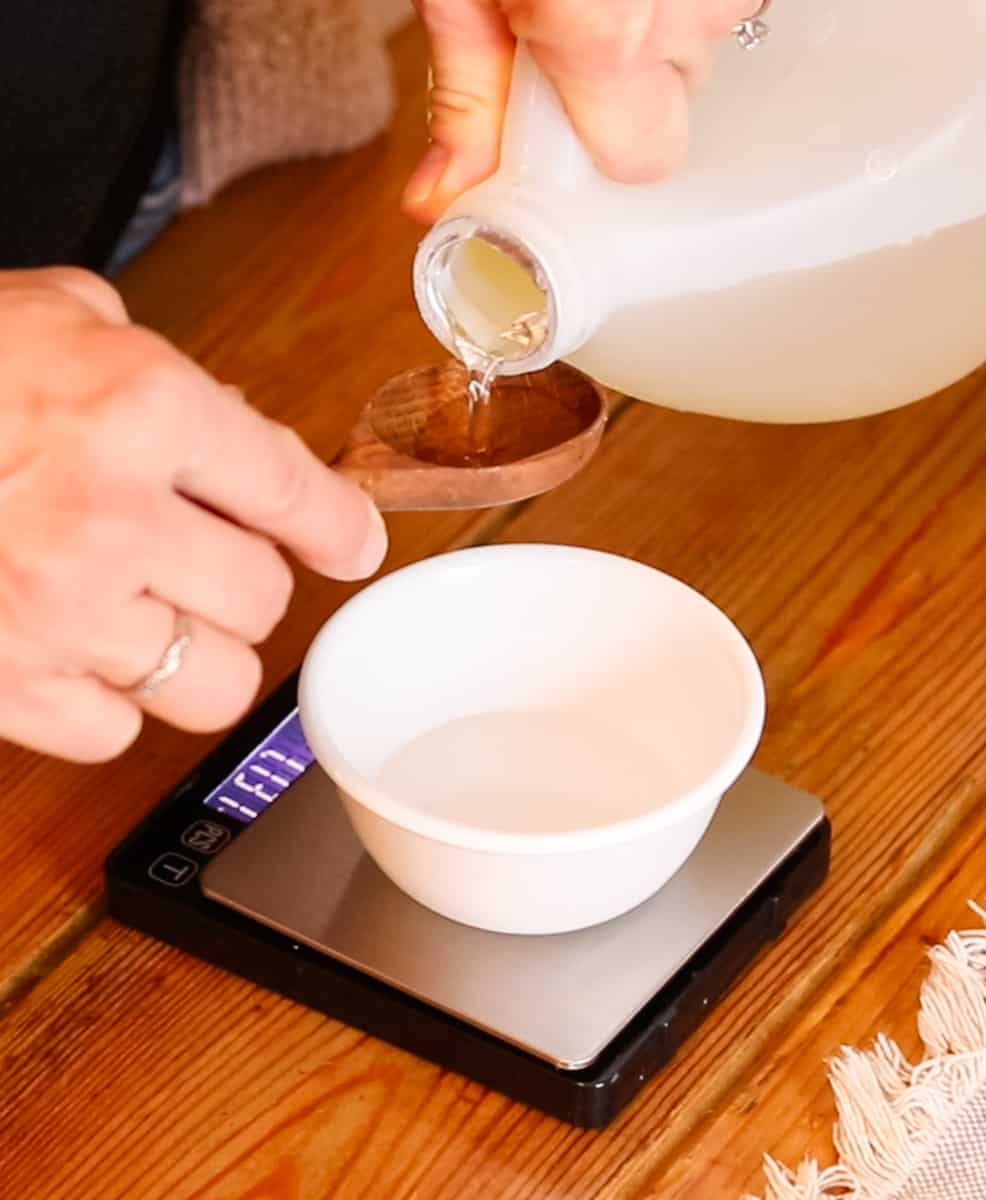
Step 2. Add the lavender essential oil, if using, along with a few splashes of water, and mix well.
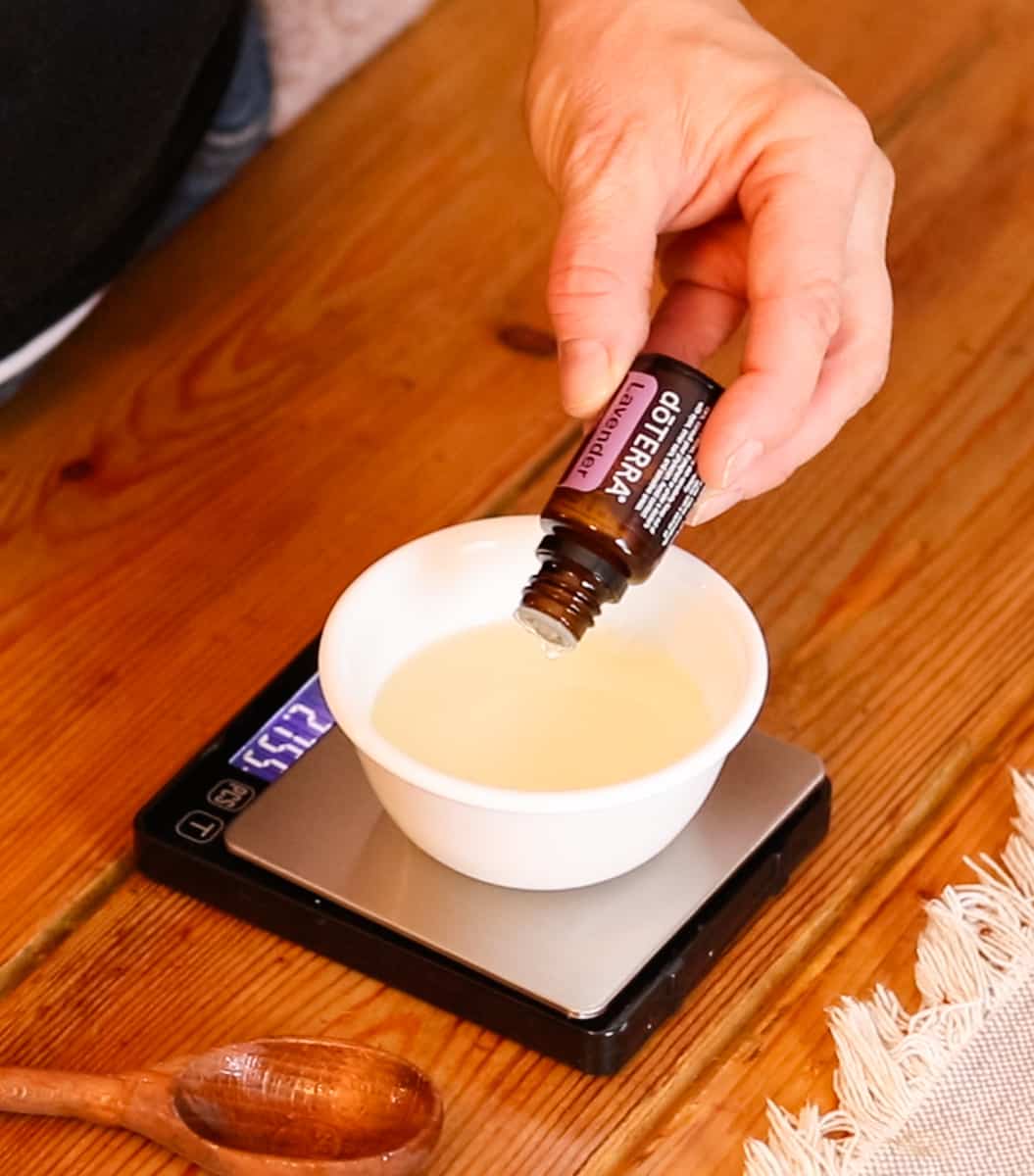
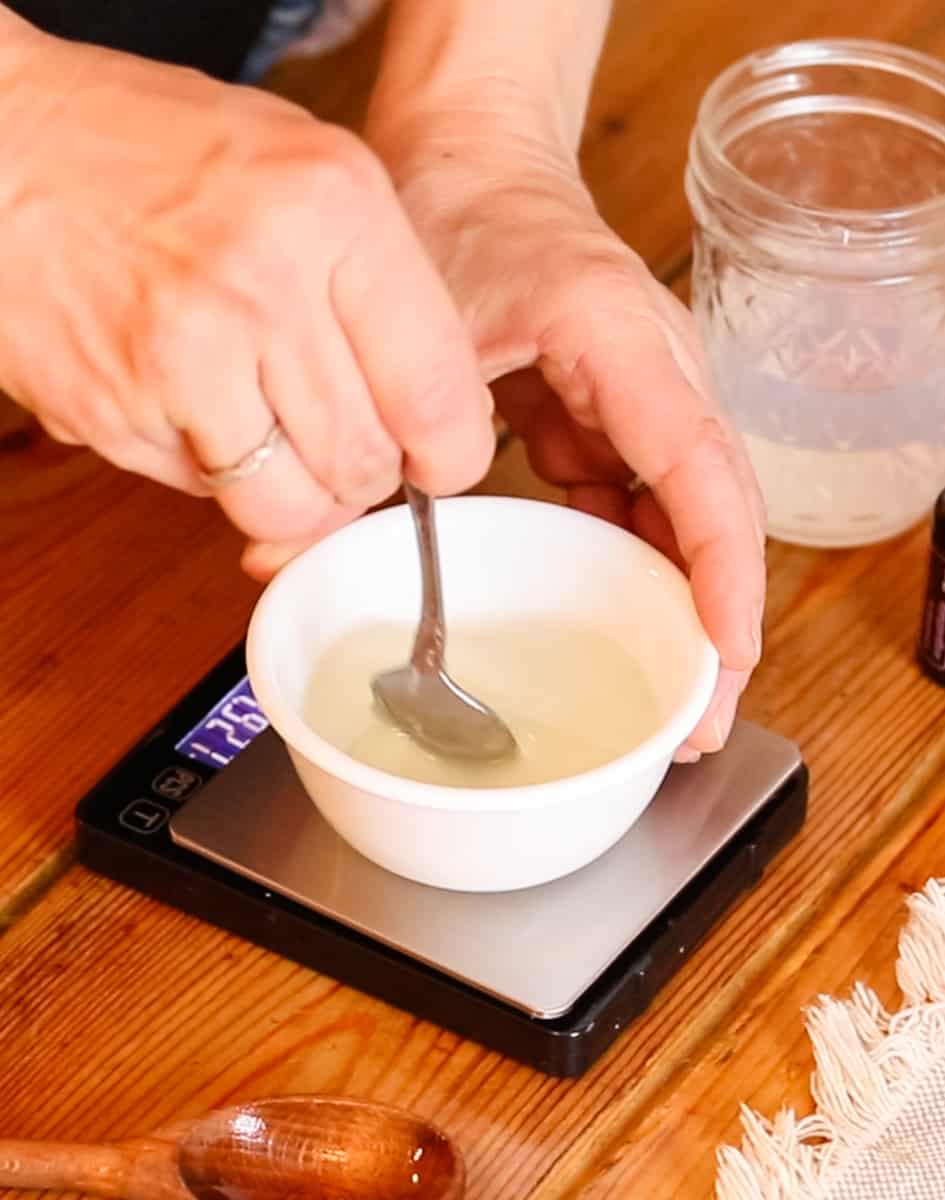
Step 3. Transfer to your soap dispenser or spray bottle and top off with the remaining water.
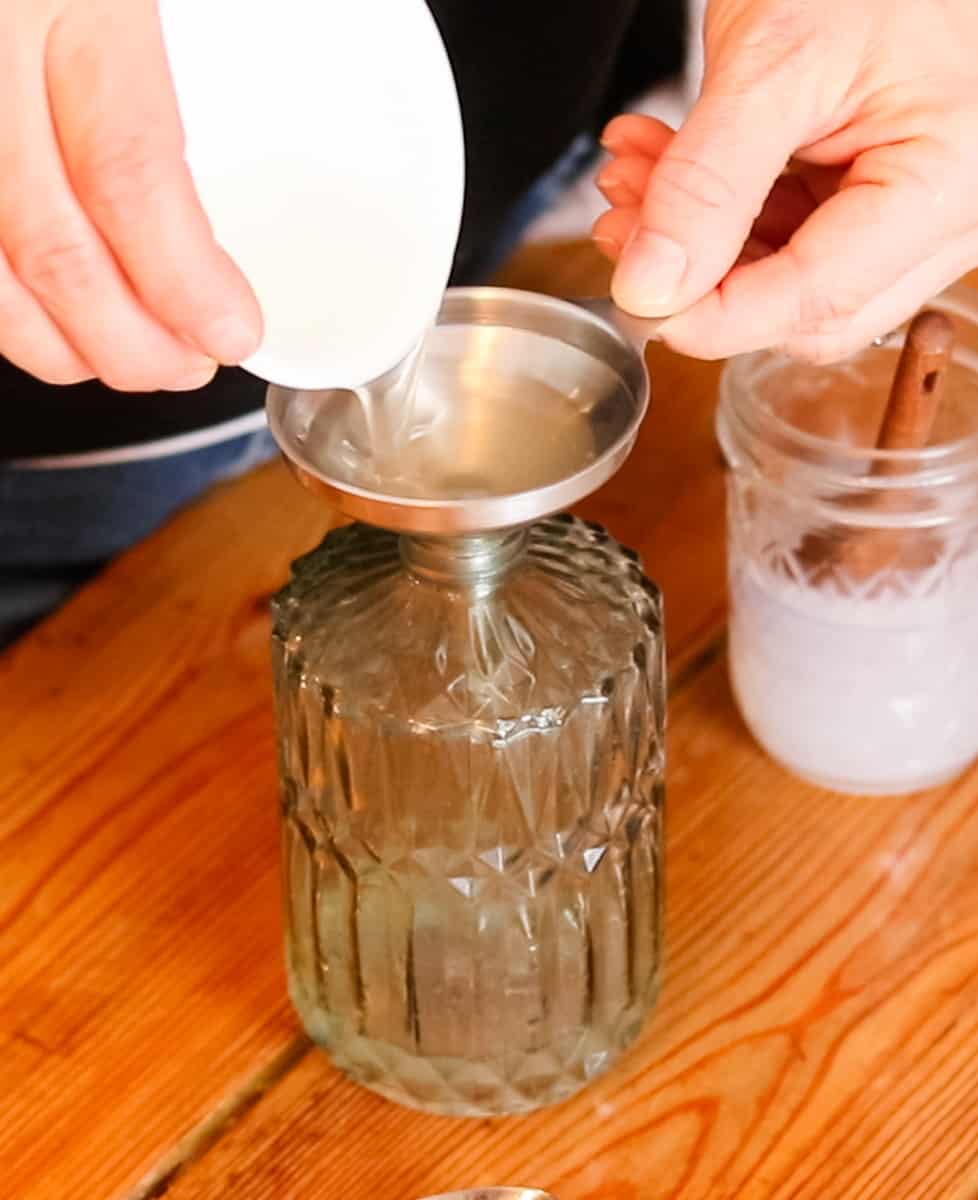
Step 4. Test the PH. It should be pretty high (9 or so), and in which case, we won’t need a preservative.
Note: If you do want to add a preservative to this soap, be sure to check out the ‘tips‘ section below.
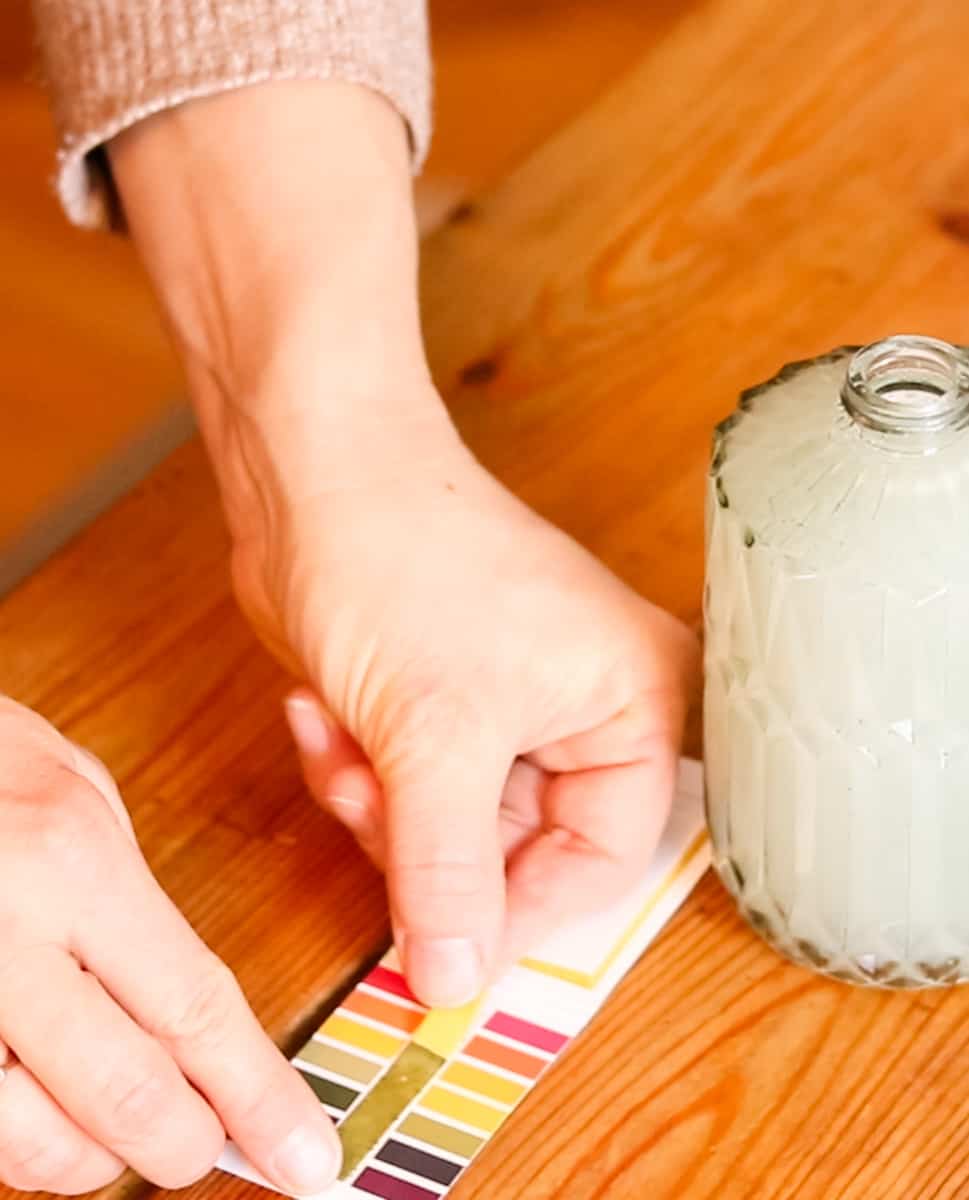
Step 6. Secure the lid and shake well. The soap is ready to use immediately!
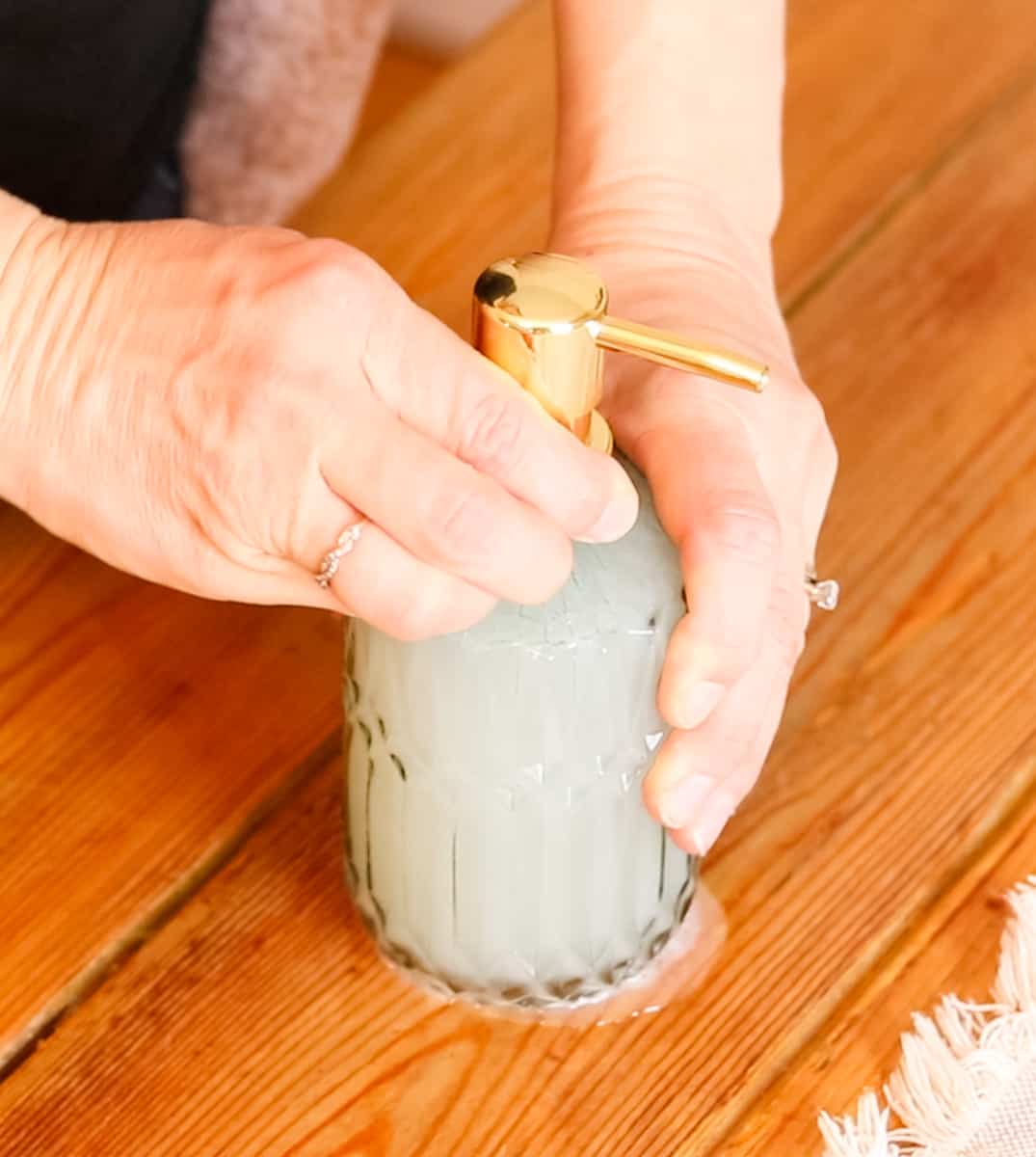
Tips:
If the PH is 9 or higher, we won’t need to add a preservative. Generally, with castile soap, you don’t need to include a preservative when diluting, according to Dr. Bronner’s site.
We could lower the PH, but soaps are just fine with a higher PH.
If the PH is low, we will add in a preservative just to be safe. It would probably be fine either way without one. Additionally, depending on the preservative you choose, you will want to check the recommended dilution rate.
Keep this homemade liquid hand soap in the bathroom or kitchen. It’s all-natural, smells fantastic, and works perfectly!
DIY liquid hand soap
Making your own soap at home allows you to be sure of what products are going onto your skin. I enjoy making this simple hand soap, and it’s nice knowing there aren’t any unnecessary chemicals in it.
Making soap yourself allows you to keep the product simple, cheap, and as natural as possible.
If you like this recipe, be sure to check out my DIY foaming hand soap recipe, too!
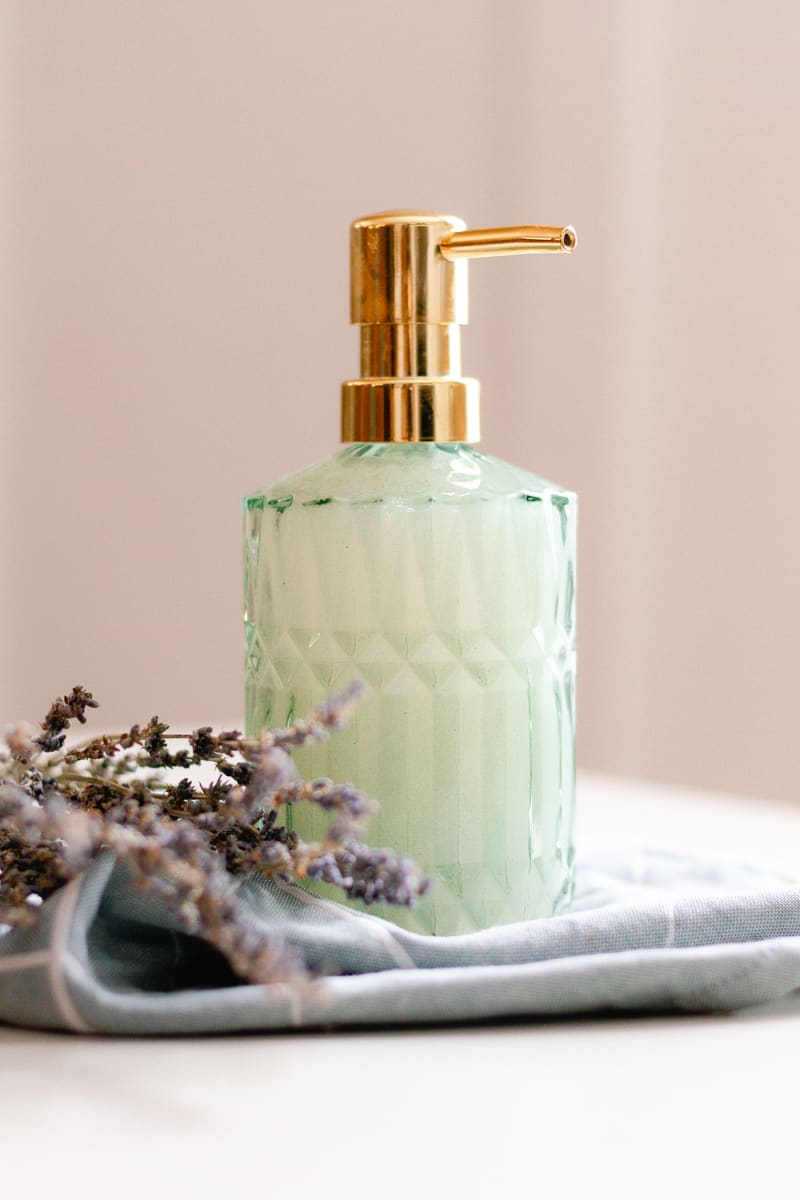
favorite essential oils for soap
I like to keep things simple when it comes to adding essential oils to my DIY hygiene products. Feel free to be creative, though, and blend up your own custom scent.
For bathroom soap, I like to use lavender EO. It’s such a calming, peaceful scent that gives those floral notes that smell clean and fresh.
Lemon:
I love using lemon essential oil in soap for the kitchen. It’s got that bright and fresh citrus aroma that adds a cheerful feeling to the room. Nothing says clean like the delicious and zesty smell of lemon.
Wild Orange:
Another great citrus scent, orange, is one of my favorite essential oils to use in soap making. It has cleansing and purifying properties, plus those refreshing notes of both lemon and orange blended together.
Lavender:
Lavender is a tried-and-true EO for DIY soap of any kind. Everyone loves this relaxing aroma. It’s excellent for sensitive skin and promotes a calming effect inside the body. You just can’t go wrong with lavender.
frequently asked questions
This soap can last at a minimum for up to three weeks, but sometimes much longer. You can extend the shelf life by adding in preservatives, but I like to keep the ingredients simple and have found that the soap stays good long enough to get us to the next refill.
This soap is very effective. It is a gentle cleansing soap that gets things clean and thoroughly hygienic.
Making your own liquid hand soap is the most cost-effective way to keep hand soap stocked. By purchasing ingredients in bulk, you can maximize savings. Plus, you have complete control over the ingredients used and can customize them to your preferences.
No, you can completely omit any fragrance or essential oil add-ins and make it an unscented liquid hand soap.
By making your own soap at home, you can re-fill the same soap dispenser over and over again. This will reduce the amount of plastic waste that occurs when people repeatedly buy plastic hand soap containers from the store.
Absolutely! There are cute soap dispensing tops that screw directly onto mason jars.
Yes, you can use regular tap water instead of distilled water. There is a chance that some tap water could contain contaminants that could decrease the shelf life of the soap.
Key takeaways
Making this homemade hand soap recipe is a simple and easy way to save money and reduce waste while making your own all-natural cleansing hand soap. I have made so many different soap recipes over the years, from foaming hand soap to different types of bar soap. I hope you’ll try some, too!
If you’re looking for creative ways to make DIY soap, you can check out more of my favorite soap recipes:
- My Favorite Loofah Soap Bar Recipe
- DIY Bubble Bath with Castile Soap
- Simple Coconut Oil Soap Bar Recipe
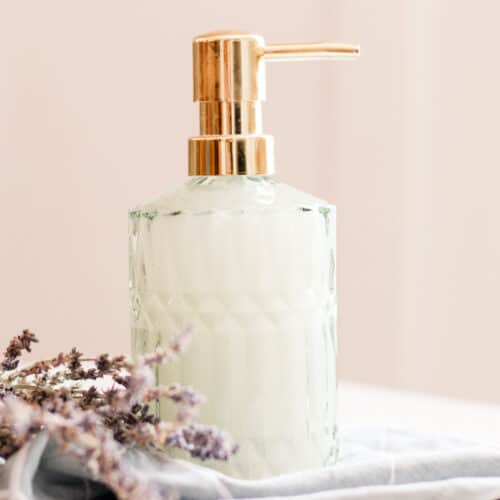
Easy Beginners Liquid Hand Soap Recipe
Equipment
Ingredients
- 12 oz distilled water
- 1 oz vegetable glycerin (2 Tablespoons)
- 2 oz castile soap (4 Tablespoons)
- 15 drops lavender essential oil
- 0.03 oz geogard 221 (if needed) 0.2% of total weight
Instructions
- Add vegetable glycerin and castile soap to a small bowl.
- Add the lavender essential oil, if using, along with a few splashes of water, and mix well.
- Transfer to your soap dispenser or spray bottle.
- Slowly add the remaining water.
- Test the PH. It should be pretty high (9 or so), and in which case, we won't need a preservative. (see notes below)
- Secure the lid and shake well.
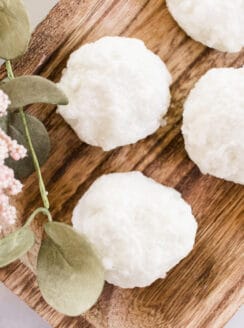

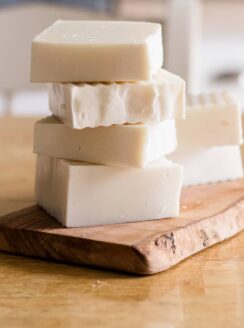
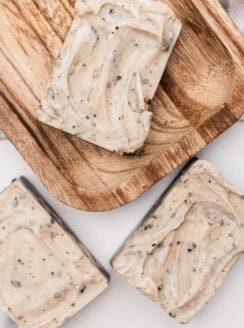
Carol says
Which pH strips do you find work the best to check the pH on soap?
Laura says
I just use PH paper test strips.